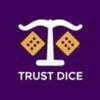You mentioned in a recent column regarding 98% slot paybacks that “if you look closely at the casino advertisement, it will probably say, “on select machines.” Typically that means dollar machines, but the return usually it is not posted on the machine itself, and generally will be limited to a single carousel of machines, or possibly just one or two slots.” My question as to that comment is, on each machine on a carousel that are linked together, such as Megabucks, are the paybacks the same? Frances D.
The best answer I can give you, Frances, is probably, In a carousel or bank of either video pokers or slots, the machines are typically hooked together so as to create progressive jackpots; still, each electronic machine within that network plays, and can be programmed to return such-and-such amount, independently.
You can presume, though, with some certainty that in most cases the paybacks are one and the same on all of the machines that are linked together, especially on a progressive carousel. And yet, Frances, there is no electronic reason why some machines couldn’t be programmed to have higher or lower long-term paybacks than the others.
One casino I once worked in had different paybacks on all their “in-house progressive” carousel machines. Of course, the unsuspecting player never knew which machines were tighter than the others, and those stingy machines got just as much play as any other on the carousel.
But, using Megabucks as an example, although you are playing an individual machine, you are hooked up to a statewide network of progressive slot carousels linked together to produce those whopping payouts, and you should feel reasonably comfortable that each machine’s payback percentage, albeit very low because it’s a monster progressive, is the same as the payback percentage of all those it’s linked to.
I’m kind of new to the world of craps. The other night while playing I overheard a couple people talking about a put bet. Is there really such a thing as a put bet? And, if there were, why would casinos let you make this bet? Albie D.
When you bet on the Pass line, Albie, one of the following three things will occur:
A.) The next roll will be a 7 or 11, in which case you immediately win even money (1 for 1), or…
B.) The next roll will be a 2, 3, or 12, in which case you immediately lose money, or…
C.) The 4, 5, 6, 8, 9, or 10 will roll, becoming YOUR and the roller’s point. If the shooter repeats the point on an ensuing roll, you win and are paid even money (1 for 1). If the “ugly 7” appears before the point repeats itself, you lose your Pass line wager.
A “Put” wager is a seldom-used bet that is made on the pass line after the crapshooter establishes their point. For instance, say you have no action on the pass line and the shooter rolls an eight. You can then “put” a bet down on the pass line and take the maximum odds.
The reason the casino permits you to make a “put” bet is because you skip the come-out seven and eleven, which has a 22.2% chance of winning, and only a 11.11% chance of losing. For the average crap player, it’s not worth giving up the come out roll.
However, for the casinos that offer 10X, 50X and even 100X odds, a “put” bet isn’t such a bad wager, especially on a $2 game. The higher odds will more than offset the seven/eleven come out advantage. But if the only casino where you play offers only 2X odds max, it is still more profitable to just make a pass line bet and take advantage of the come out seven/eleven.
Gambling Wisdom of the Week: “Many bad players will not improve because they cannot bear self-knowledge.” David Mamet, Things I learned Playing Poker on the Hill (1986)




















